The Portland Institute for Contemporary Art (PICA) is a contemporary performance and visual arts organization in Portland in the U.S. state of Oregon. PICA was founded in 1995 by Kristy Edmunds. Since 2003, it has presented the annual Time-Based Art Festival (TBA) every September in Portland, featuring contemporary and experimental visual art, dance, theatre, film/video, music, and educational and public programs from local, national, and international artists. As of November 2017, it is led by Executive Director Victoria Frey and Artistic Directors Roya Amirsoleymani, Erin Boberg Doughton, and Kristan Kennedy.
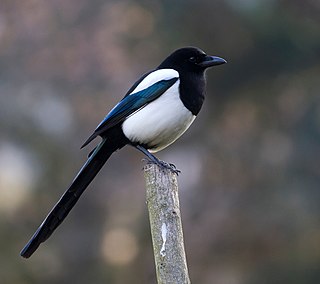
Magpies are birds of the family Corvidae. Like other members of their family, they are widely considered to be intelligent creatures. The Eurasian magpie, for instance, is thought to rank among the world's most intelligent creatures and is one of the few nonmammalian species able to recognize itself in a mirror test. Magpies have shown the ability to make and use tools, imitate human speech, grieve, play games, and work in teams. They are particularly well known for their songs and were once popular as cagebirds. In addition to other members of the genus Pica, corvids considered as magpies are in the genera Cissa, Urocissa, and Cyanopica.
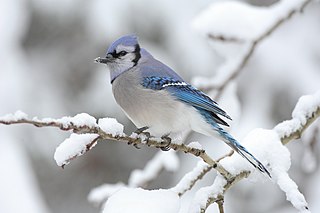
Corvidae is a cosmopolitan family of oscine passerine birds that contains the crows, ravens, rooks, magpies, jackdaws, jays, treepies, choughs, and nutcrackers. In colloquial English, they are known as the crow family or corvids. Currently, 135 species are included in this family. The genus Corvus containing 47 species makes up over a third of the entire family. Corvids (ravens) are the largest passerines.
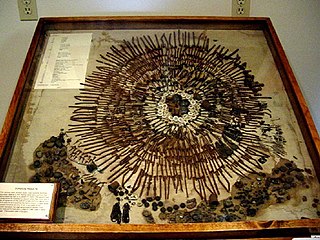
Pica is the eating or craving of things that are not food. It is classified as an eating disorder but can also be the result of an existing mental disorder. The ingested or craved substance may be biological, natural or manmade. The term was drawn directly from the medieval Latin word for magpie, a bird subject to much folklore regarding its opportunistic feeding behaviors.

The yellow-billed magpie(Pica nuttalli), also known as the California magpie, is a large corvid that inhabits California's Central Valley and the adjacent chaparral foothills and mountains. Apart from its having a yellow bill and a yellow streak around the eye, it is virtually identical to the black-billed magpie (Pica hudsonia) found in much of the rest of North America. The scientific name commemorates the English naturalist Thomas Nuttall.
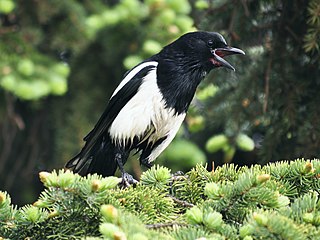
The black-billed magpie, also known as the American magpie, is a bird in the corvid family found in the western half of North America. It is black and white, with the wings and tail showing black areas and iridescent hints of blue and blue-green. It was once thought to be a subspecies of the Eurasian magpie, but was placed into its own species in 2000 based on genetic studies.

The Eurasian magpie or common magpie is a resident breeding bird throughout the northern part of the Eurasian continent. It is one of several birds in the crow family (corvids) designated magpies, and belongs to the Holarctic radiation of "monochrome" magpies. In Europe, "magpie" is used by English speakers as a synonym for the Eurasian magpie: the only other magpie in Europe is the Iberian magpie, which is limited to the Iberian Peninsula. Despite having a shared name and similar colouration, it is not closely related to the Australian Magpie.

Pica is a genus of seven species of birds in the family Corvidae in both the New World and the Old. It is one of several corvid genera whose members are known as magpies.
The Helm Identification Guides are a series of books that identify groups of birds. The series include two types of guides, those that are:

The golden nightjar is a species of nightjar in the family Caprimulgidae. It is found in Sahel region in northern Sub-Saharan Africa.

The Abyssinian woodpecker, also known as the golden-backed woodpecker or the golden-mantled woodpecker, is a species of bird in the woodpecker family, Picidae. It is native to Africa, where it occurs in Eritrea and Ethiopia. It appears to be a close relative of the cardinal woodpecker Dendropicos fuscescens.
Omisus is a genus of non-biting midges in the subfamily Chironominae of the bloodworm family Chironomidae.

Cittarium pica, common name the West Indian top shell or magpie shell, is a species of large edible sea snail, a marine gastropod mollusk in the family Tegulidae. This species has a large black and white shell.

Amblyptilia pica, the geranium plume moth, is a moth of the family Pterophoridae. The species was first described by Baron Walsingham in 1880. It is found in western North America from Alaska to California, inland to Alberta and Kansas. It is also found in the north-eastern United States and Ontario.
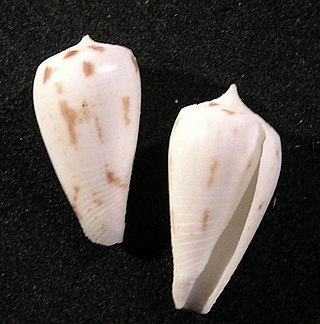
Conus pica is a species of sea snail, a marine gastropod mollusk in the family Conidae, the cone snails and their allies.

CUMYL-PICA (SGT-56) is an indole-3-carboxamide based synthetic cannabinoid. It is the α,α-dimethylbenzyl analogue of SDB-006. It was briefly sold in New Zealand during 2013 as an ingredient of at the time legal synthetic cannabis products, but the product containing CUMYL-BICA and CUMYL-PICA was denied an interim licensing approval under the Psychoactive Substances regulatory scheme, due to reports of adverse events in consumers. CUMYL-PICA acts as an agonist for the cannabinoid receptors, with Ki values of 59.21 nM at CB1 and 136.38 nM at CB2 and EC50 values of 11.98 nM at CB1 and 16.2 nM at CB2.

FUB-144 (also known as FUB-UR-144) is an indole-based synthetic cannabinoid that is presumed to be a potent agonist of the CB1 receptor and has been sold online as a designer drug. It is an analogue of UR-144 and XLR-11 where the pentyl chain has been replaced with fluorobenzyl.

Amalia Pica is a London-based Argentine artist who explores metaphor, communication, and civic participation through sculptures, installations, photographs, projections, live performances, and drawings.

The Asir magpie, also known as the Arabian magpie, is a highly endangered species of magpie endemic to Saudi Arabia. It is only found in the country's southwestern highlands, in the Asir Region. It occurs only in African juniper forest in well-vegetated wadis and valleys. It was formerly classified as a subspecies of the Eurasian magpie, and still is by many authorities. This species is highly threatened by habitat destruction, as its native forests are not regenerating. Tourism development and climate change are also posing a threat. Only 135 pairs are known to survive in the wild, and this number is declining.
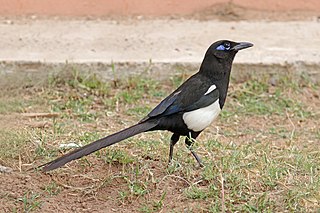
The Maghreb magpie is a species of magpie found in North Africa from Morocco east to Tunisia. It can be distinguished from the Eurasian magpie by the patch of blue skin behind its eye, the narrower white belly, the shorter wings, and the longer tail.
















